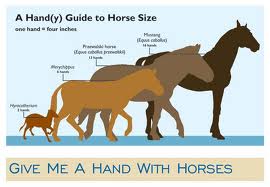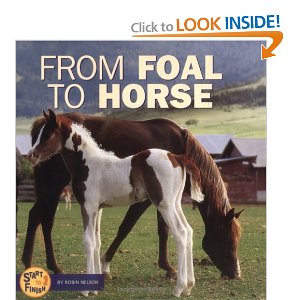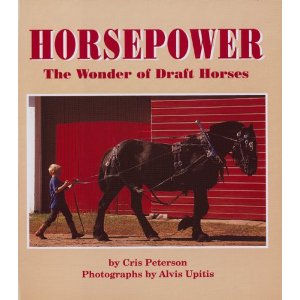|
January, 2013
Food For Thought
|
|
Thank you to all who donated to our annual appeal in December. If you did not have a chance to make a contribution, its not too late. Click on the donation button above or send a check made out to NHAITC to 295 Sheep Davis Road, Concord, NH 03301.
We would especially like to thank the following businesses and organizations for their recent support: the HNH Foundation for funding our school garden project; the Booth Foundation, the Berger Family Fund of the NH Charitable Foundation; Hubbard Farms Charitable Foundation; North Family Farm; Pleasant View Gardens, American Calan; and of course the NH Farm Bureau Federation and the NH Department of Agriculture, Markets and Food.
|
|
Horse Vocabulary
Colt - a young male horse, less than 3 years old
Draught horse - a heavy breed used for pulling heavy loads
Equine - all members of the horse family including donkeys and zebras
Filly - a young female horse, less than 3 years old
Foal - a young horse, less than a year
Gelding - a mature male horse that has been castrated
Herd - a group of horses
Mane - long hair grown on the horse's neck

Mare - a mature female horse
Mule - the offspring of a female horse and a male donkey
Mustang - wild horse of the western plains
Pony - a horse-like animal that is less than 14 hands tall
Reins - straps attached to the bit, used to guide the horse
Saddle - a seat for the rider
Stallion - a mature male horse used for breeding
Stirrups - attachment to the saddle to help the rider mount the horse
Tack - the brushes, saddles and other equipment used to ride and care for horses.
| |
|
Horse Facts
- There are more than 150 breeds of horses. Examples are Appaloosa, Arabian, Belgian, Clydesdale, Morgan, Palomino, Shetland Pony, Thoroughbred
- Horses have strong teeth, sharp ears, keen eyes and a good sense of smell.
- The measurement used to size up horses, called a hand is equal to 4"

- Horse hooves grow like our fingernails and must be trimmed every 4-6 weeks.
- Race horses can run 30 miles per hour.
- Horses drink 10-12 gallons of water each day.
- Horses usually sleep standing up. They may lie down if they feel safe.
- Horses are good swimmers.
- The word equine comes from the Greek word equus, which means quick.
| |
|
Calendar
February 8-9: NH Farm & Forest Expo, Manchester, NH - Come visit our booth
March 10-11: NH Science Teachers Conference - Keene, NH Join us for a workshop on school gardens.
March 19: National Ag Day
Contact us to participate in the Ag Literacy Program
June 25-28: National Ag in the Classroom Conference,
Minneapolis, MN
On-line registration is open: www.agclassroom.org/conference2013
|
Contacts
NH Ag in the Classroom Ruth Smith, Statewide Coordinator nhaitc@nhfarmbureau.org 603-224-1934 295 Sheep Davis Road Concord, NH 03301 Deb Robie, Grafton County Coordinator wehunt4@paigecos.com
| |
|
|
Greetings,
It seems that many girls at a certain age go through a "horse stage". I certainly did. I read all of the "Misty" books by Marguerite Henry about the wild ponies on Chincoteague and Assateague Islands. I got so hooked that one of the first vacations I took as an independent adult was to the coastal islands where I could see those ponies for myself. I read Black Beauty, Justin Morgan Had a Horse and countless other fictional and non-fiction books about the beautiful animals that I longed to own. I was able to ride the horses on my grandfather's farm, but the only "equine" that I ever owned was the wooden rocking horse that Grampa made for me.
If I had been able to own or care for a horse, I would have learned how much work it is. Horses, along with their relatives the donkey and mule provide many benefits, but are not animals that can be easily added to a family menagerie. They have very specialized needs. Working with horses can be extremely rewarding and children around the state can learn what's involved in horse care through 4-H clubs as well as private stables.
Equine operations in New Hampshire have a value of about $50 million, one of the highest sectors of our local agriculture. There are more than half a dozen different organizations dedicated solely to horse promotion and education in the state (see the resource listing). The University of NH offers both two and four year degrees in Equine Studies. Horses are used for many things including pleasure riding, racing, police work, farm work and therapeutic purposes.
The importance of horses in our past cannot be overstated. For thousands of years horses have assisted humans, impacting transportation, trade, war, work and spirituality. For all of these reasons and more, this issue of Food for Thought focuses on horses. I hope the resources listed will provide a creative new lens through which to view and teach some of the topics in your curriculum.
Happy New Year and have fun "horsing around" in your classroom!
Ruth
Ruth Smith, Statewide Coordinator
NH Agriculture in the Classroom |
|
Horse Activities
Horses can be used as a theme to teach various subjects. Illinois Agriculture in the Classroom has developed a Horse Lesson Packet with several engaging activities to cover math, reading, history, science (simple machines) and art. Below is a sample of these activities which are designed for grades 4-6. To see them all go to: http://www.agintheclassroom.org/TeacherResources/Lesson%20Booklets/Horse%20Lessons.pdf
History and reading: "The Reading Ranch"
The Pony Express was created to decrease the amount of time it took to get mail from the east coast to California during the early 1860's. A relay system was established that enabled a mail carrier to ride a horse fast (about 10 miles/hour) for 10-15 miles, then pick up a new horse and ride it to the next station. The riders were replaced every 6 - 8 stops. There were a total of 165 stations across the country. This activity outlines historical data, and focuses on reading comprehension. But it also provides an opportunity for students to use math and calculate how long it would take to deliver the mail and how far the riders would travel to do so.
Math: "A Hand-some Horse"
Horses are measured using a scale called a hand. This comes from the days when standardized measurements didn't really exist and people actually used the width of their hand to determine the height of a horse. Today a "hand" equals 4 inches. The "Hand"some Horse activity challenges students to convert the measurement of some horses from hands to inches and feet.
Language Arts: "A Horse of a Different Color"
Using phrases like "stubborn as a mule", "putting the cart before the horse", "straight from the horse's mouth", "don't look a gift horse in the mouth", etc. students explore the origin of words and phrases. This activity challenges students to really think about language and the meaning of words.
Science & adaptation:
Resources listed at the end of these lessons provide a link to the International Museum of the Horse. This organization has a comprehensive timeline beginning with prehistoric eras up through present time. Learning about the evolution of horses and the change in their features can provide a way for students to examine adaptations. Fossil records show that the earliest horse-like creatures walked in what is now Utah and Wyoming some 55-45 million years ago. Their feet had 4 toes on the front and 3 toes on the back. Over time as their habitat shifted and the need to run faster increased, their toe structure changed to form the first one-toed animal (12-6 million years ago), which was better adapted for speed. See more at www.imh.org - History of Horses.
Geography:
Ironically, the horse had to be brought back to North America. The early equines vanished from the continent about 8-10,000 years ago. The Spanish explorers brought horses on their ships in the early 1500's, thus returning the horse to its ancestral home. During this time, the Native Americans living here had no knowledge of the horse. When they first encountered these creatures, they were in awe and quickly incorporated them into their culture, particularly in the western and plains regions.
Language Arts:
Using the terms in the glossary, play a horse version of Pictionary. Students will draw the word listed and their team mates have to guess the word within a certain time limit.
Community Connections:
Have your students interview someone in their community who currently works with horses or has owned one in the past. Find out what tasks are required to insure proper care for the animals. Ask about how the horse is/was used (work, pleasure, etc.)
Culture:
Look for examples in our culture where the horse is used as an icon (Mustang cars, the Colts football team, etc.) Discuss what features of the horse are considered desirable as a symbol for these icons.
Research:
Explore ways that horses have been used for transportation, work, war, and sport. |
|
Horse Resources
American Farm Bureau Federation - Ag Mag newspapers, books, fact sheets and more related to the agriculture industry. Click on Educational Materials.
http://www.fb.org/index.php?action=ordermaterials
Horse Lesson Booklet from Illinois Ag in the Classroom - great activities that cover math, reading, history, LA, Illinois AITC produces an Ag Mag magazine about horses, available on the website. http://www.agintheclassroom.org/TeacherResources/TeacherResources.shtml
International Museum of the Horse - www.imh.org educational resources for teachers, parents and students. Provides an extensive time line of the history of the horse from prehistoric times to the present; games and puzzles, vocabulary and additional resources.

Books
From Foal to Horse by Robin Nelson
This book explores the life cycle of horses, helps teach sequential thinking. Appropriate for grades K-2. ISBN: 978-0822509417.
Horse Dictionary: An A to Z by Don Harper
This dictionary introduces young readers to horses, includes how horses have changed through time, parts of a horse body, types of horses, how they are used and more. Appropriate for grades 3-6 ISBN: 978-0439754583.
Horses on the Farm by Mari Schuh.
This book explores the importance of horses in agriculture. Appropriate for grades K-3
ISBN: 978-0736811897.
 Horsepower: The Wonder of Draft Horses by Cris Peterson. Horsepower: The Wonder of Draft Horses by Cris Peterson.
The author describes some of the breeds of draft horses, their characteristics and amazing abilities. Appropriate for grades K-3. ISBN: 978-1563979439.
Life on a Horse Farm by Judy Wolfman.
Sarah helps her parents raise Thoroughbred race horses. She helps readers learn about what it takes to raise and care for horses. Appropriate for grades K-4. ISBN: 978-1575055176.
The Horse: Faster than the Wind by Valerie Tracqui
Learn facts about the life and abilities of wild horses. Appropriate for grades 2-4. ISBN: 978-1570914508.
Horse Organizations and Resources in NH
Equine Studies at UNH www.equine.unh.edu
Granite State Appaloosa Association www.granitestateapps.com
Granite State Draft Horse & Pony Association
Granite State Miniature Horse Society
Granite State Morgan Horse Society www.nhmorgans.com
NH Arabian Horse Association
NH Horse Council www.nhhorsecouncil.com
NH Quarter Horse Association www.nhqha.com
|
|
|